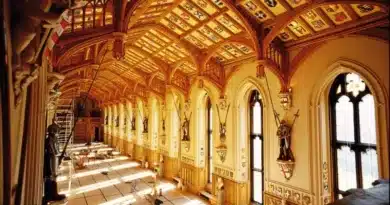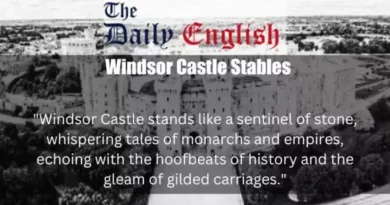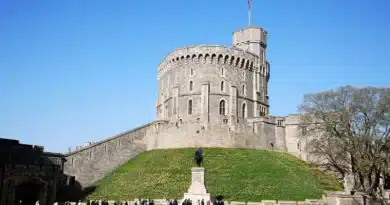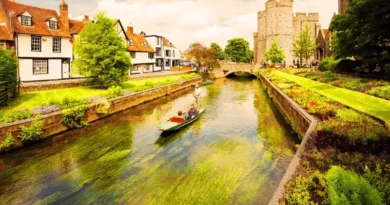Are There Women in the Coldstream Guards at Windsor Castle?
Yes, women serve in the Coldstream Guards, one of the British Army’s most prestigious regiments. The regiment, renowned for its ceremonial duties at locations like Windsor Castle, is fully open to female soldiers. Women have been part of the British infantry, including ceremonial and operational roles, since the lifting of restrictions on women serving in combat roles in 2016. Female soldiers can perform the same roles as their male counterparts, including guarding royal residences such as Windsor Castle and Buckingham Palace and other ceremonial positions.
Key Takeaways
| Category | Details |
|---|---|
| Women in the Coldstream Guards | Women now serve in the Coldstream Guards, performing ceremonial duties at Windsor Castle, marking a progressive shift in the historically male-dominated regiment. |
| Historic Significance | Formed in 1650, the Coldstream Guards is the British Army’s oldest continuously serving regiment, known for both elite infantry and ceremonial roles. |
| Opening of Combat Roles | In 2018, the British Army opened all combat roles to women, allowing their integration into regiments like the Coldstream Guards. |
| Roles Performed by Women | Women serve as riflemen, ceremonial guards, and musicians, participating in high-profile events, including the Changing of the Guard and performances by the Band of the Coldstream Guards. |
| Training Equality | Female recruits undergo identical rigorous training as male counterparts, mastering infantry skills, ceremonial protocols, discipline, and professionalism. |
| Ceremonial Duties at Windsor Castle | Duties include securing the royal residence and performing iconic events such as the Changing of the Guard, held on scheduled days like Tuesdays, Thursdays, and Saturdays. |
| Symbol of Progress | Female guards symbolize gender equality and modernity while preserving the regiment’s traditions, inspiring visitors and reflecting societal change. |
| Band of the Coldstream Guards | The elite band, featuring female musicians, blends traditional and contemporary compositions, adding cultural significance to ceremonies. |
| Challenges and Adaptations | Integrating women posed challenges, but the regiment has adapted, ensuring equal opportunities while maintaining high standards of excellence. |
| Cultural Impact | The inclusion of women underscores the evolving role of women in the military, inspiring public appreciation and showcasing the British Army’s commitment to diversity. |
| Tradition Meets Modern Values | The Coldstream Guards balance tradition with modern values, demonstrating adaptability and inclusiveness in their prestigious roles. |
Introduction
The Coldstream Guards, one of the oldest and most prestigious regiments in the British Army, are known for their dual role as elite infantry and ceremonial guards. While historically male-dominated, the regiment has progressively integrated women into its ranks, marking a significant milestone in its rich history. Women now actively participate in ceremonial duties, including those at Windsor Castle, reflecting broader changes in the British Army and society.

History and Role of the Coldstream Guards
Formed in 1650, the Coldstream Guards is the oldest continuously serving regiment in the British Army. Initially created for combat, the regiment has evolved to include ceremonial roles as protectors of royal palaces, including Windsor Castle, Buckingham Palace, and St. James’s Palace. Its ceremonial functions include the Changing of the Guard, the King’s Birthday Parade, and the State Opening of Parliament. At Windsor Castle, the guards perform high-profile duties such as guarding the royal residence and participating in ceremonial events seen by millions globally.
Integration of Women in the Coldstream Guards
The British Army formally opened all combat roles to women in 2018, a landmark decision enabling female soldiers to join regiments like the Coldstream Guards. Since then, women have been recruited into various roles within the regiment, including as ceremonial guards and musicians. Their presence at Windsor Castle highlights the Army’s commitment to diversity while maintaining the rigorous standards of precision and professionalism for which the Guards are known.
Women serve in roles such as riflemen, ceremonial guards, and musicians in the Band of the Coldstream Guards. This elite band, one of the oldest military marching bands globally, plays a key role during ceremonial events at Windsor Castle and beyond.
Ceremonial Duties at Windsor Castle
The Coldstream Guards perform their duties at Windsor Castle as part of the King’s Guard, ensuring security while representing the ceremonial face of the monarchy. The Changing of the Guard ceremony is a central attraction, taking place on scheduled days, such as Tuesdays, Thursdays, and Saturdays. Soldiers march from Victoria Barracks to Windsor Castle in full ceremonial attire, including iconic red tunics and bearskin caps.
Female regiment members participate in these ceremonies, often alongside musical support from the Band of the Coldstream Guards. Their inclusion not only symbolises gender equality but also demonstrates the adaptability of tradition to modern values.
Training and Expectations
Female recruits to the Coldstream Guards undergo the same rigorous training as their male counterparts. This includes mastering infantry skills, learning ceremonial protocols, and maintaining the physical and mental endurance required for their duties. Guards are expected to exhibit precision, discipline, and professionalism in every aspect of their role.
The ceremonial duties at Windsor Castle demand exceptional attention to detail, including drill movements, presentations, and conduct in front of the public. Women in the Coldstream Guards have proven their ability to meet these high standards, serving as role models for future recruits.

Public and Cultural Impact
Including women in such a historically significant regiment has had a broad cultural impact. It highlights the evolving role of women in the military and their capability to perform in demanding and highly visible roles. At Windsor Castle, female guards symbolise progress, inspiring visitors worldwide who witness the ceremonies.
The Band of the Coldstream Guards, which often features female musicians, adds to this cultural resonance. Their performances, which include both military and contemporary compositions, bring modernity to traditional events, showcasing the versatility of the regiment.
Challenges and Progress
While progress has been significant, integrating women into such a historic regiment has challenges. These include adapting existing traditions to include diverse perspectives while maintaining the rigorous standards for which the Coldstream Guards are known. The regiment has actively worked to address these challenges, ensuring that all soldiers, regardless of gender, receive equal opportunities and support.
The British Army’s continued efforts to promote gender equality, alongside its respect for tradition, demonstrate its commitment to creating an inclusive environment while upholding the prestige of institutions like the Coldstream Guards.

Conclusion
Women in the Coldstream Guards at Windsor Castle represent a meaningful step forward for the British Army, blending tradition with modern values. Their roles, from ceremonial guards to musicians, embody the evolving nature of military service in the 21st century. As they stand guard at Windsor Castle, these women not only protect a historic royal residence but also pave the way for future generations, demonstrating the strength of diversity within one of Britain’s most iconic institutions.
For additional details about the Coldstream Guards and their activities, you can explore resources such as the British Army’s official page on the regiment.

FAQ
Are women allowed to serve in the Coldstream Guards?
Yes, women are permitted to serve in the Coldstream Guards. Since 2018, all British Army combat roles, including those in the infantry, have been open to women, allowing them to participate in both operational and ceremonial duties.
When did women first participate in guard duties at Windsor Castle?
In April 2007, the King’s Troop, Royal Horse Artillery, which includes female soldiers, took over the guard at Windsor Castle. This marked one of the earliest instances of women participating in such duties.
When did women first join the Coldstream Guards?
Women were first allowed to join the British Army’s infantry roles, including the Coldstream Guards, in 2018 after the Ministry of Defense lifted restrictions on women serving in combat roles in 2016. Female soldiers in the regiment began performing ceremonial duties shortly after.
What roles do women perform in the Coldstream Guards at Windsor Castle?
Women in the Coldstream Guards at Windsor Castle undertake the same roles as their male counterparts. These include ceremonial duties such as standing guard, participating in the Changing of the Guard, other public ceremonies, and operational infantry roles.
What training do women undergo to join the Coldstream Guards?
Women undergo the same rigorous training as men to join the Coldstream Guards. This includes the Combat Infantry Course, which covers weapons handling, fitness, and ceremonial drills, ensuring all soldiers meet the high standards required for both operational and ceremonial duties.
Do female Coldstream Guards wear the same uniforms as male guards at Windsor Castle?
Yes, female Coldstream Guards wear the same iconic red tunics and bearskin hats as their male counterparts during ceremonial duties at Windsor Castle, upholding the regiment’s traditions and visual uniformity.
What is the role of women in ceremonial activities at Windsor Castle?
Women participate fully in ceremonial duties at Windsor Castle, including the Changing of the Guard, standing sentry at royal residences, and providing musical support in the Band of the Coldstream Guards. They perform their roles with the same level of precision and discipline expected of all Coldstream Guards.
How do women balance operational and ceremonial roles in the Coldstream Guards?
Like their male counterparts, women in the Coldstream Guards are trained in both operational infantry duties and ceremonial roles. Their schedules often include periods of active military service interspersed with ceremonial responsibilities such as guarding Windsor Castle or participating in state events.
Are there any notable female figures in the Coldstream Guards’ history at Windsor Castle?
While women’s integration into the Coldstream Guards is relatively recent, their contributions have been significant. Specific individuals may not be widely publicized, but female soldiers have actively participated in ceremonial duties at Windsor Castle since the policy changes.
Are there notable female firsts in the Coldstream Guards?
The Coldstream Guards have witnessed notable milestones reflecting the increasing inclusion of women in their ranks. Following the British Army’s decision in 2016 to lift the ban on women serving in close combat roles, opportunities opened for women to join regiments like the Coldstream Guards. In 2017, Captain Megan Couto of the Canadian Army made history by leading the Changing of the Guard ceremony at Buckingham Palace, highlighting the evolving role of women in such prestigious traditions. However, she was not a regiment member. Women have also joined the Band of the Coldstream Guards, contributing significantly to its musical and ceremonial functions. These developments underscore the changing landscape of military service and the valuable contributions of women, setting important precedents for future generations in the British Army.
Have any challenges integrating women into the Coldstream Guards at Windsor Castle?
Integrating women into the Coldstream Guards has been a progressive step, with the regiment adapting to ensure inclusivity. While any organizational change presents challenges, the focus has remained on maintaining operational effectiveness and ceremonial excellence at Windsor Castle.
What public reactions have been to women serving in the Coldstream Guards at Windsor Castle?
Public reactions have been largely positive, with many visitors appreciating the British Army’s inclusivity and modern representation. Seeing women perform iconic ceremonial duties has inspired many and reinforced the evolving role of women in traditionally male-dominated fields.
Do female guards participate in international ceremonies or only at Windsor Castle?
Female Coldstream Guards participate in international and domestic ceremonial events. Beyond Windsor Castle, they are involved in state events like Trooping the Colour, royal parades, and global diplomatic ceremonies where the Coldstream Guards represent British heritage.
Are there female musicians in the Band of the Coldstream Guards?
Yes, the Band of the Coldstream Guards includes female musicians. They play a key role in ceremonial events at Windsor Castle and other royal engagements, often performing traditional military marches and contemporary music.
What impact have women had on the Coldstream Guards’ public image?
The inclusion of women has modernized the Coldstream Guards’ public image, showcasing the British Army’s commitment to equality. It demonstrates that the regiment values diversity while maintaining the professionalism and discipline for which it is known globally.
Are there specific roles within the Coldstream Guards reserved for women?
No roles are specifically reserved for women; they are eligible to perform all duties, from ceremonial sentry roles at Windsor Castle to operational infantry tasks. Assignments are based on merit, training, and the regiment’s needs.
How has the inclusion of women impacted the Coldstream Guards’ duties at Windsor Castle?
The inclusion of women has enhanced the Coldstream Guards by promoting diversity and reflecting modern societal values. It has not altered the regiment’s operational effectiveness or ceremonial precision at Windsor Castle.









